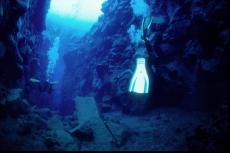Networking is key for corals too
“The currents go in various directions, but the prevailing direction is from east to west, and this carries coral spawn and fish larvae from areas such as round the Spratly Islands in the South China Sea and the Solomons, Papua New Guinea,” explained Dr Johnathan Kool of the ARC Centre of Excellence for Coral Reef Studies and James Cook University.
“Maintaining the network of links between reefs allowing larvae to flow between them and re-stock depleted areas, is key to saving coral ecosystems threatened by human pressure and climate change.
The Coral Triangle supports more than one third of all the world’s coral reefs, including over 600 various species of reef-building coral and 3,000 species of reef fish. These coral ecosystems are a source of food and income for more than 100 million people who work in marine based industries in the region.
“Knowing where coral spawn comes from is vital to managing our reefs successfully. Even though coral reef communities may not be connected directly to one another, reefs on the edge of the Coral Triangle have the potential to contribute significant amounts of genetic diversity throughout the region,” said Kool.
Six nations within the Coral Triangle, (Indonesia, the Philippines, Malaysia, Papua New Guinea, The Solomon Islands and Timor L’Este) are now working together to strengthen coral reef governance and management, under an arrangement known as the Coral Triangle Initiative.
- Log in to post comments























